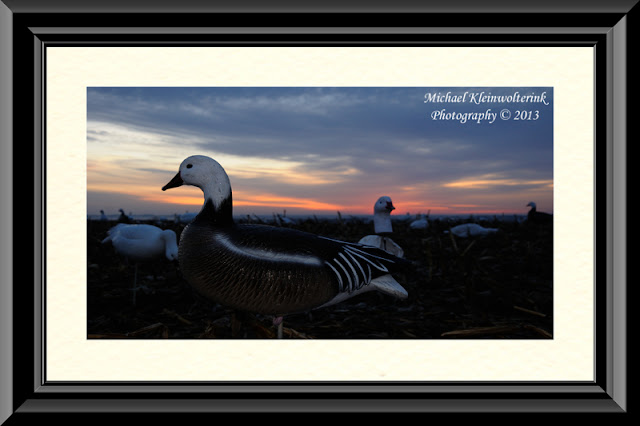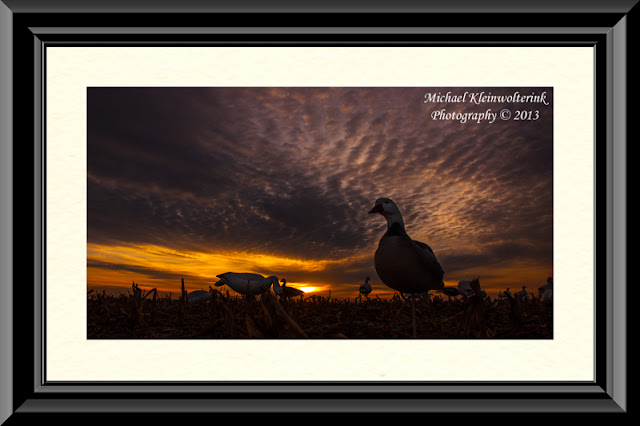The spring 2013 snow goose season had me very excited after purchasing
new gear throughout the season in terms of decoys along with building new
equipment to fool the smart geese. From a young age, I learned from my grandpa
that you receive a greater satisfaction of accomplishment when you build
something and it works how you hoped it would. Once again, that proved to be
true with some fun and exciting shoots over the equipment I built during the
winter months. My crew put the miles in this spring taking two trips down to
southwest Iowa along with hunting our main area and had success in both places.
Winter storms rolled through key staging areas, which created another major challenge,
we dealt with and played the cards that we were given us. In the end, it was another
memorable season and I’m already looking forward to next year.
Throughout the season, I had the D90 with me in the layout blind and
captured the landscape of the hunt. I used the 18-105mm and 24-120mm lense and
also used the 12-24mm when I had the camera on a tripod behind my blind. I had
the camera in aperture priority mode along with RAW format and with the
changing lighting conditions, adjusted the ISO from 200-800. On sunrise/sunset
images, I made adjustments to the exposure compensation as well.
To process the RAW files, I used either ViewNX or Adobe CameraRaw by
adjusting the sliders in both programs. Key adjustments included changing the
white balance to direct sunlight or shade, exposure compensation, picture
control to nature landscape or monosnowgoose and highlight/shadow changes. For
certain images I might choice one program over the other to get the most out of
the scene I’m trying to capture. Once done in the raw conversion programs, I
outputted the files into TIFF’s and worked on them using Elements.
Inside PSE 11, minor adjustments were made because I was pretty happy
with the look of them after doing the major adjustments to the RAW files. The
cloning and crop tools helped to clean up the images a bit and the gradient
tool mixed with a clipping mask was used as well. To create some WWII b/w
images, I used the VirtualPhotographer Plug-in along with the clipping mask
layers and the brush tool.
With all the birds to the north, it is time to clean and put away the
gear until next spring and start planning for the new season. It will be here
before we know it. In the mean time, it’s time to farm and play golf. I’ll be
capturing photographs along the way.
#1.
#2.
#3.
#4.
#5.
#6.
#7.
#8.
#9.
#10.
#11.
#12.
#13.
#14.
#15.
#16.
#17.
#18.
#19.
#20.
#21.
#22.
#23.
#24.
#25.
#26.
#2.
#3.
#4.
#5.
#6.
#7.
#8.
#9.
#10.
#11.
#12.
#13.
#14.
#15.
#16.
#17.
#18.
#19.
#20.
#21.
#22.
#23.
#24.
#25.
#26.

























